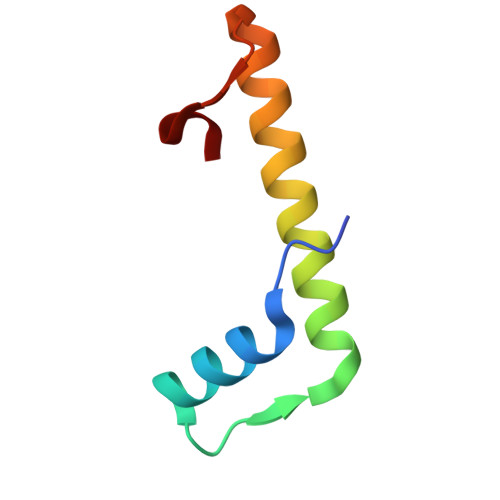Histones and histone variant families in prokaryotes.
Schwab, S., Hu, Y., van Erp, B., Cajili, M.K.M., Hartmann, M.D., Hernandez Alvarez, B., Alva, V., Boyle, A.L., Dame, R.T.(2024) Nat Commun 15: 7950-7950
- PubMed: 39261503
- DOI: https://doi.org/10.1038/s41467-024-52337-y
- Primary Citation of Related Structures:
9F2C - PubMed Abstract:
Histones are important chromatin-organizing proteins in eukaryotes and archaea. They form superhelical structures around which DNA is wrapped. Recent studies have shown that some archaea and bacteria contain alternative histones that exhibit different DNA binding properties, in addition to highly divergent sequences. However, the vast majority of these histones are identified in metagenomes and thus are difficult to study in vivo. The recent revolutionary breakthroughs in computational protein structure prediction by AlphaFold2 and RoseTTAfold allow for unprecedented insights into the potential function and structure of previously uncharacterized proteins. Here, we categorize the prokaryotic histone space into 17 distinct groups based on AlphaFold2 predictions. We identify a superfamily of histones, termed α3 histones, which are common in archaea and present in several bacteria. Importantly, we establish the existence of a large family of histones throughout archaea and in some bacteriophages that, instead of wrapping DNA, bridge DNA, thereby diverging from conventional nucleosomal histones.
Organizational Affiliation:
Leiden Institute of Chemistry, Leiden University, Leiden, The Netherlands.














